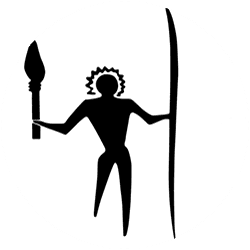New Britain Headrest
An unusual headrest with a powerful female kami figure standing on flexed legs. Her enormous hands splay down from the wrists and she seems almost to be supporting herself on her fingertips. The buttocks are exaggerated and she is presented in a cubist manner that is an unusual variation on the artistic style of the greater area. A headrest of this type was not used for sleeping and it served only on specific ceremonial occasions when the owner’s hair was being painted red as part of certain rituals. The Kombi people seem not to use carved and decorated headrests, rather they sleep on pieces of pandanus palm-frond stalk. Guhi Village, Kombi (Kombe or Kove) area, North West Coast of New Britain, PNG, Melanesia. Wood with a superb crusty patina of age and use. 20.3 x 17 x 8.4 x 18 cm. Early 20th century.
Provenance Field collected at Guhi Village and reported to have belonged to members of the Kalimaruhi clan. Ex collection Crispin Howarth.
Literature: Pub. : OCEANIC HEADRESTS / APPUIE-NUQUE OCEANIENS. Gal. Meyer, Paris, 2004. Pp. 58/59, N° 41
The Kombi and other tribes including the Nakanai along the North Western coast of New Britain were only officially contact by Australian Patrol Officers in the 1950’s.














